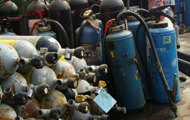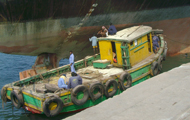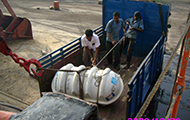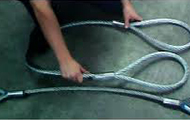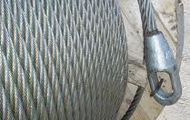Onboard Calibration & Certification for Co2 fixed system, Gas Detector's & Analyzer etc.,
Inspection, service and maintenance of the SCBA & EEBD equipment are made in our own service station:
Dheen International provides accurate, reliable and efficient monitoring solutions and products to detect a variety of gasses. We have extensive experience in gas detection instruments and gas monitoring systems for oxygen, toxic, flammable and refrigerant gases.We promise to service and maintain our kit for the entire life of the system. Because we manufacture and design systems in their entirety our systems do not become obsolete.To maintain safety conditions during marine operation, gas detection, and measurement is important for the vessel and its personnel safety.
The main requirements to check on the safety are as follows:
|
Instruments used
To be able to carry out this effectively there is a wide range of instruments that are fixed and portable for ship use. Each unit is usually calibrated for a specific gas and some have duel functions for example combustible gases and Oxygen.
It is important to know the instrument limitations as well as their function and method of use. Manufacturers hand books should always be consulted for full details regarding the instrument before use.
Instrument Calibration
To get accurate reading and maintain the reliability of gas detectors instruments it is important to have regular calibrating and testing. All instruments whether fixed or portable must be thoroughly checked before use and records kept of their checks and faults found.
To do the calibration correctly an adequate supply of calibrating gas must be available on board for the testing hydrocarbon equipment and pure nitrogen for checking oxygen analyzers.
Oxygen Analyzer
On ships that carry crude oil inert gas systems are essential to maintain safety, but the oxygen analyzer helps to detect and calculate that the oxygen levels remain below 8%. All ships must carry a portable oxygen analyzer to check oxygen levels within different places on the ship.
Limits of Flammability
Hydrocarbon flammability levels vary for different gases, but most petroleum product flammability ranges between 1-10% by volume also referred to as lower and upper flammability limits. Below the lower level the mixture is too weak to burn whereas above the limit it’s too rich to burn. Amount of oxygen available is also another limitation, with a minimum of 11.5% oxygen in air volume required to support combustion.
Catalytic Filament combustible gas indicator
Also referred to as an EXPLOSIMETER, is used for gas detection, and measurement below the lower flammable limit (LFL). The instrument measures on a scale of 0-100% LFL while some models have an additional meter that measure 1-10% LFL to allow for precise measurement of the lower ranges. These types of instruments can only read accurately in fresh air; and cannot be used with inert gases.
Non- Catalytic Heated Filament gas indicator
Tank scope an example of one type of these instruments is used to measure hydrocarbon on a scale of0-20% volume. The instrument works in all conditions as air is not a requirement for it to work therefore working in inert gas also.
Its main purpose is to determine if hydrocarbons levels are below the Critical Dilution Line (CDL) thus avoiding to pass to the flammable zone when gas freeing is underway.
These are some of the instruments used for gas detection, and measurement of toxic levels on board marine tankers. Without these instruments modern shipping would have not advanced on safety levels that they have achieved.






